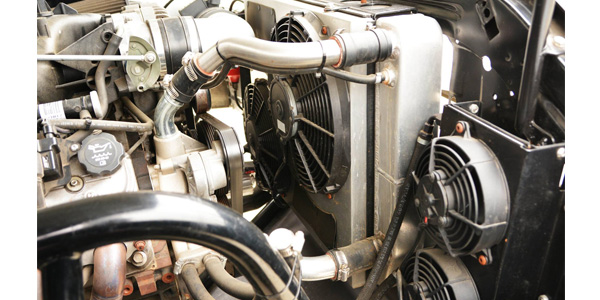
In the OEMs’ quest for better fuel efficiency and cleaner-burning engines, heretofore belt-driven components such as fans, power steering pumps and even water pumps are running off the electric circuit instead. This helps reduce parasitic loss from the engine and improve fuel mileage, but it also makes it more complicated to diagnose the problem when something goes wrong.
Most cars today have an electric cooling fan that is controlled by the computer or a thermal fan switch and a relay. Electric fans often are mounted behind the radiator, and sometimes in the front. Depending on the manufacturer, some vehicles use a temperature switch to turn the fan on and off, or with commands from the engine computer and coolant sensor, or a control module to run the fan. And some vehicles have two electric fans, one of which may be used for the A/C condenser.
Overheating is one of the most common causes of breakdowns, so there are abundant opportunities for maintenance and repairs of cooling system components. Many vehicle owners never check under the hood until a problem occurs and they’re stranded on the side of the road. Thermal fan switches and relays fail, and by the time the vehicle owner realizes there’s a problem, they’ve already overheated the engine and may have caused further damage.
The engine coolant temperature (ECT) sensor converts the coolant’s temperature into a voltage signal. The voltage will be high for a cold engine and low after the engine warms up. If it doesn’t fall within the voltage range, the PCM will trigger a check-engine light.
One of the codes for an out-of-range ECT is P0115. This code is set if the voltage goes below or above the expected range of 0.14 volts to 4.91 volts. The ECT should have an input of 5 volts and a good ground. This signal should be verified to make sure the sensor is working correctly.
Using a scan tool, technicians can diagnose if the voltage to the sensor drops as the engine warms up, thus eliminating it from the list. Other diagnostics include making sure the fan isn’t stuck in the “On” position, which would not allow the engine to warm up to operating temperature in the correct amount of time measured by the PCM. Failure to do so would trigger another code – a P0128.
Checking the cooling fan for power and operation would be the next test if the ECT checks out and is operating in the correct range. A simple way to test it is to apply 12 volts to the fan at the connector terminals to see if it has power.
Another test that can be performed is to use a jumper wire at the harness for the ECT, which should kick the fan on and click the relay. If nothing happens, then the relay will need to be inspected. The relay should make a clicking sound when applying 12 volts to the power terminals. With the relay in the open position (with 12 volts), a multimeter can be used to check the continuity of the relay to the circuit.
Summer puts a lot of demand on the cooling system, from the HVAC to the fan to the electrical components that control it. Your staff should be ready to answer a lot of questions about these systems in the heat of the driving season to help keep your customers cool.












